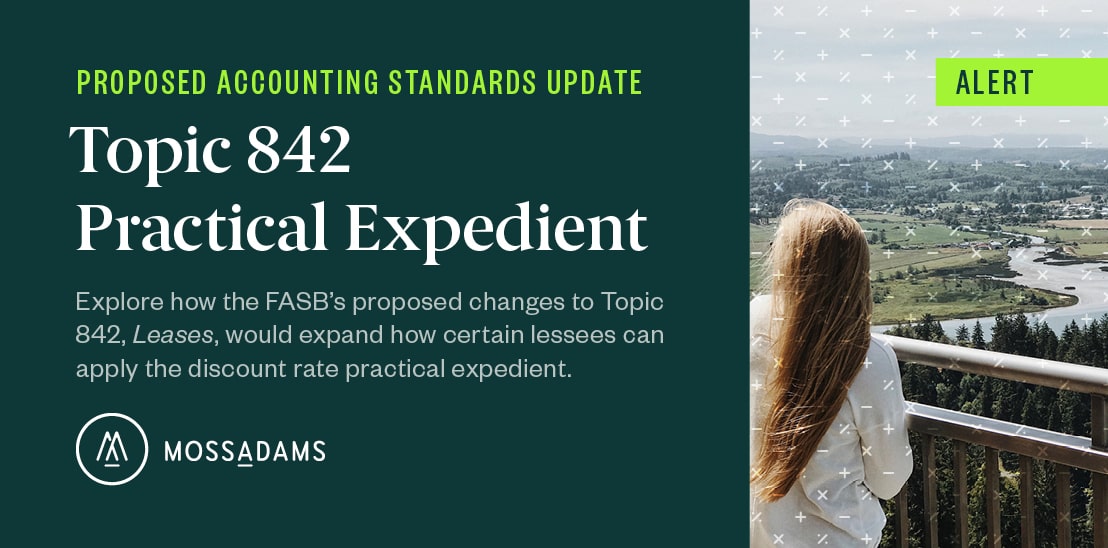This article, "FASB Proposes Changes to Topic 842 Risk-Free Discount Rate Practical Expedient," originally appeared on MossAdams.com.
The Financial Accounting Standards Board (FASB) has issued proposed Accounting Standards Update (ASU), Leases (Topic 842): Discount Rate for Lessees That Are Not Public Business Entities.
During public roundtable sessions hosted by the FASB, private company stakeholders raised concerns and expressed reluctance to use the risk-free discount rate practical expedient provided for in Topic 842. The practical expedient allows a lessee that isn’t a public business entity to make an entity-wide accounting policy election to use a risk-free rate as the discount rate for all leases.
To address these concerns, the proposed amendments would allow a lessee that isn’t a public business entity to apply this practical expedient by class of underlying asset—rather than at the entity-wide level.
Regardless of whether the practical expedient is elected, the proposed amendments would also require the lessee to use the rate implicit in the lease when readily determinable for any individual lease.
Entities Affected by the Proposed Amendments
The proposed amendments apply to lessees that aren’t public business entities, including:
- Private companies
- Not-for-profit entities, whether or not they’re conduit bond obligors
- Employee benefit plans, whether or not they file or furnish financial statements with or to the Securities and Exchange Commission
Key Provisions
During the FASB’s postimplementation review of Topic 842, private company stakeholders noted that using a risk-free rate—such as a US Treasury rate—in the current economic environment could increase a lessee’s lease liability and right-of-use asset recorded on the balance sheet. This is because the risk-free rate is lower than the average incremental borrowing rates and using a lower rate results in a higher discounted balance.
Using this lower rate could also affect lease classification and cause leases that otherwise would be classified as operating lease to be classified as financing leases. For financing leases, the discount rate also impacts the timing of and amounts recognized as interest and amortization.
Current Guidance
Topic 842 currently requires a lessee to use the rate implicit in the lease whenever that rate is readily determinable. If the rate implicit in the lease isn’t readily determinable, a lessee should use its incremental borrowing rate.
A lessee that isn’t a public business entity is permitted to use a risk-free discount rate as an accounting policy election for all leases. The risk-free discount rate should be determined using a period comparable with that of the lease term.
Proposed Guidance
The proposed guidance is intended to provide more flexibility for a lessee that makes the risk-free rate election. The amendments to Topic 842 would allow the election to be made by class of underlying asset, rather than at the entity-wide level.
This would provide lessees with an option to use their incremental borrowing rate to calculate the lease liability for material asset classes, while applying the risk-free rate election to asset classes that have lower values or greater volumes of leases.
Under the amended guidance, an entity that makes the risk-free rate election would be required to disclose which asset classes it has elected to apply a risk-free rate.
When readily determinable for any individual lease, the proposed amendments would require the lessee to use the rate implicit in the lease—rather than a risk-free rate or an incremental borrowing rate—even if the risk-free rate accounting policy has been elected.
Comment Period
Comments on the proposed amendments are due by July 16, 2021.
We’re Here to Help
For more information on how the proposed amendments could affect your business, contact your Moss Adams professional.



